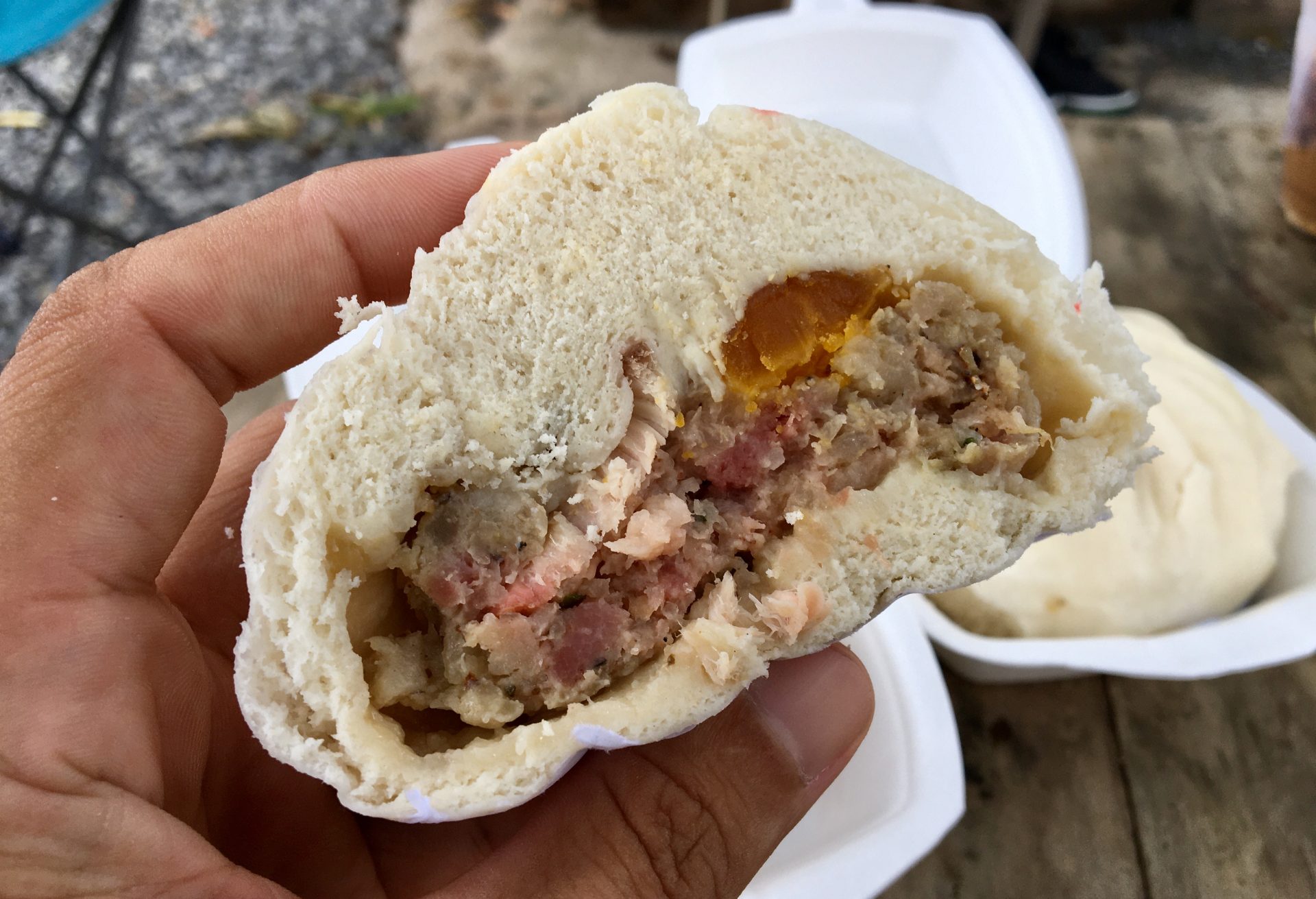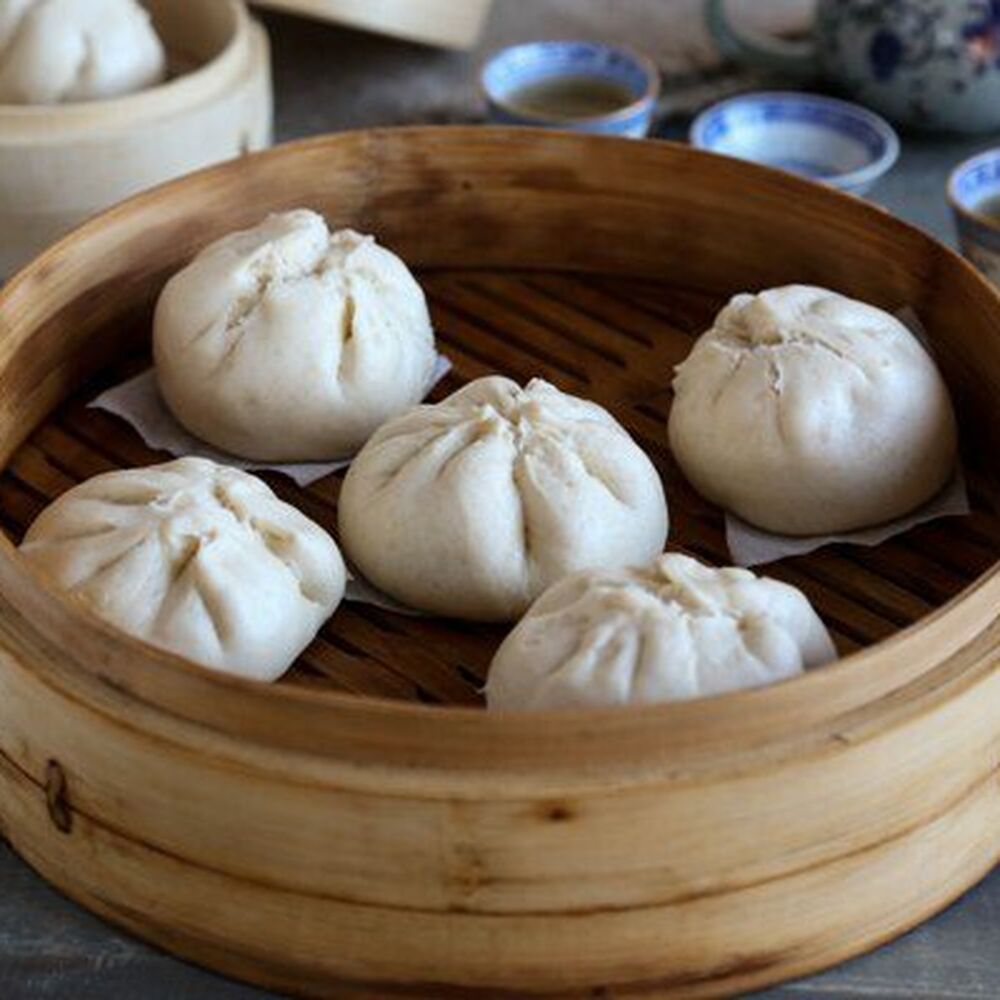Embark on a tantalizing culinary adventure as we delve into the world of Vietnamese banh bao. These delectable steamed buns, steeped in tradition and bursting with flavor, are a beloved staple of Vietnamese cuisine. Join us as we explore the origins, ingredients, cooking techniques, and cultural significance of this cherished dish.
From the bustling streets of Hanoi to the vibrant markets of Ho Chi Minh City, banh bao has captured the hearts and palates of Vietnamese people for centuries. With its soft, fluffy dough and savory fillings, it’s a treat that transcends generations, connecting people through shared culinary experiences.
Vietnamese Banh Bao Recipe Overview
Banh bao is a traditional Vietnamese steamed bun filled with various savory or sweet ingredients. Originating in the 10th century, it holds cultural significance as a symbol of family, prosperity, and good fortune.
The dough for banh bao is made from a combination of flour, yeast, and water. The filling can vary widely, from classic pork and mushroom to vegetarian options like tofu and vegetables. The buns are typically steamed in bamboo baskets until fluffy and cooked through.
Ingredients
- For the dough:
- All-purpose flour
- Yeast
- Water
- For the filling:
- Ground pork
- Mushrooms
- Onion
- Soy sauce
- Oyster sauce
Cooking Process
- Proof the yeast in warm water.
- Combine the flour and yeast mixture and knead into a dough.
- Let the dough rise until doubled in size.
- While the dough is rising, prepare the filling by sautéing the ground pork, mushrooms, and onion.
- Divide the dough into small balls and flatten them into circles.
- Place a spoonful of filling in the center of each circle and fold the dough up around the filling, pinching the edges to seal.
- Steam the buns in a bamboo basket for 15-20 minutes, or until cooked through.
Essential Ingredients and Equipment
Crafting Vietnamese banh bao requires a meticulous selection of ingredients and the right equipment. Let’s explore the essential components that will elevate your banh bao experience.
Key Ingredients
- Dough: High-gluten flour, water, sugar, yeast, and oil form the foundation of the fluffy dough.
- Fillings: The heart of banh bao lies in its diverse fillings, ranging from classic pork belly to savory vegetables and sweet red bean paste.
- Seasonings: Soy sauce, oyster sauce, fish sauce, and sesame oil add depth and umami to both the dough and fillings.
Essential Equipment
- Steamer: A traditional bamboo steamer or a modern electric steamer ensures even cooking.
- Bamboo baskets: These lined baskets hold the banh bao and allow for proper steaming.
- Rolling pin: A sturdy rolling pin is essential for flattening the dough to the desired thickness.
Step-by-Step Cooking

Creating Vietnamese banh bao involves a meticulous step-by-step process that demands precision and attention to detail. From preparing the dough to steaming the assembled buns, each stage plays a crucial role in achieving the desired texture, flavor, and presentation.
Preparing the Dough
The foundation of banh bao lies in its soft and fluffy dough. To prepare it, combine warm water, sugar, and yeast in a bowl and let stand for 5 minutes, or until the yeast has dissolved and become foamy. In a separate bowl, whisk together flour and salt.
Gradually add the wet ingredients to the dry ingredients, stirring until a dough forms. Knead the dough on a lightly floured surface for 5-7 minutes until it becomes smooth and elastic.
Mixing and Seasoning the Filling
The filling for banh bao can vary depending on personal preference, but a traditional pork filling is a popular choice. Combine ground pork, minced garlic, grated ginger, soy sauce, oyster sauce, and sesame oil in a bowl. Mix thoroughly to combine the flavors and seasonings.
If desired, add vegetables such as chopped carrots, peas, or mushrooms for added texture and nutrition.
Shaping and Assembling the Banh Bao
To shape the banh bao, divide the dough into equal portions and roll each portion into a thin circle. Place a spoonful of filling in the center of the circle and gather the edges of the dough up and around the filling, pinching them together to seal the bun.
Make sure to leave a small opening at the top for steam to escape during cooking.
Steaming the Banh Bao
Steaming is the traditional method for cooking banh bao. Line a steamer with parchment paper or banana leaves to prevent the buns from sticking. Place the banh bao in the steamer and steam over high heat for 10-12 minutes, or until they have doubled in size and are cooked through.
Serve hot with your favorite dipping sauce.
Variations and Adaptations
The versatility of Vietnamese banh bao allows for endless variations and adaptations. These adaptations cater to diverse preferences, dietary restrictions, and creative culinary expressions.
Fillings
Traditional fillings include pork, shrimp, and vegetables. However, modern variations introduce a wide array of ingredients, such as beef, chicken, tofu, and exotic seafood.
Dough Preparation
The dough’s composition can vary to achieve different textures and flavors. Using different flours, such as wheat, rice, or tapioca, alters the dough’s elasticity and chewiness. Adding food coloring enhances the visual appeal and can represent cultural or regional significance.
Presentation Techniques
Presentation techniques add an artistic touch to banh bao. Steaming banh bao in unique molds or using edible garnishes like chives or sesame seeds enhances their aesthetic appeal. Some creative chefs even form intricate shapes, such as animals or flowers, from the dough.
Serving and Accompaniments
Traditionally, Vietnamese banh bao is served as a standalone dish or as a part of a larger meal. It is often accompanied by a dipping sauce to enhance its flavor.
The most common dipping sauce for banh bao is a mixture of fish sauce, rice vinegar, sugar, and garlic. Other popular accompaniments include pickled vegetables such as carrots, daikon, and cucumbers, as well as fresh herbs like cilantro, basil, and mint.
Dipping Sauces
- Fish sauce dipping sauce: This is the most popular dipping sauce for banh bao. It is made with a mixture of fish sauce, rice vinegar, sugar, and garlic.
- Hoisin sauce: Hoisin sauce is a thick, sweet, and savory sauce made from fermented soybeans. It is a good option for those who prefer a sweeter dipping sauce.
- Sriracha sauce: Sriracha sauce is a hot sauce made from chili peppers. It is a good option for those who like a spicy dipping sauce.
Nutritional Information and Health Benefits

Vietnamese banh bao is generally considered a nutritious food item. It is a good source of carbohydrates, protein, and fiber. Banh bao also contains a variety of vitamins and minerals, including vitamin B1, vitamin B2, niacin, and iron.
Health Benefits
Consuming banh bao may offer several potential health benefits, including:
-
-*Improved digestion
The fiber in banh bao can help to improve digestion and prevent constipation.
-*Reduced risk of heart disease
The fiber and antioxidants in banh bao may help to reduce the risk of heart disease.
-*Lowered blood sugar levels
The fiber in banh bao can help to slow down the absorption of sugar into the bloodstream, which can help to lower blood sugar levels.
-*Increased satiety
The fiber and protein in banh bao can help to increase satiety and promote feelings of fullness.
It is important to note that the nutritional content and health benefits of banh bao can vary depending on the ingredients used and the preparation method.
For example, banh bao made with whole-wheat flour and lean protein will be more nutritious than banh bao made with white flour and fatty meat.
Cultural Significance and Symbolism
Banh bao holds a significant place in Vietnamese cuisine, embodying the country’s rich cultural heritage and traditions.
Traditionally, banh bao is associated with prosperity, good luck, and abundance. Its round shape symbolizes wholeness and unity, while the white color represents purity and good fortune. During festivals and celebrations, such as the Tet Lunar New Year, banh bao is a customary offering to ancestors and deities, representing the hope for a prosperous and harmonious year ahead.
Traditional Uses
Beyond its symbolic significance, banh bao plays a practical role in Vietnamese culture. It is a staple food for many families, providing sustenance and comfort during everyday meals. Banh bao is also commonly enjoyed as a street food, sold by vendors on bustling streets and markets.
In recent years, banh bao has gained popularity internationally, becoming a beloved dish in various cuisines.
Last Recap
As we bid farewell to our exploration of Vietnamese banh bao, we leave you with a profound appreciation for its culinary delights and cultural significance. Whether you’re a seasoned enthusiast or a curious newcomer, we encourage you to embrace the joy of crafting and savoring these delectable treats.
Let the aroma of freshly steamed banh bao fill your kitchen and create lasting memories that celebrate the vibrant tapestry of Vietnamese cuisine.
Frequently Asked Questions
What is the difference between banh bao and other steamed buns?
While banh bao shares similarities with other steamed buns, it stands out with its unique dough made from a combination of rice flour and wheat flour, resulting in a distinctively soft and chewy texture.
What are the most common fillings for banh bao?
Traditional fillings include minced pork, shrimp, and vegetables, such as carrots, onions, and mushrooms. However, modern variations have expanded to include a wide array of fillings, catering to diverse preferences.
Can banh bao be made ahead of time?
Yes, banh bao can be prepared ahead of time and steamed later. Simply assemble the buns and place them on a baking sheet lined with parchment paper. Cover and refrigerate for up to 24 hours. When ready to serve, steam as directed.
